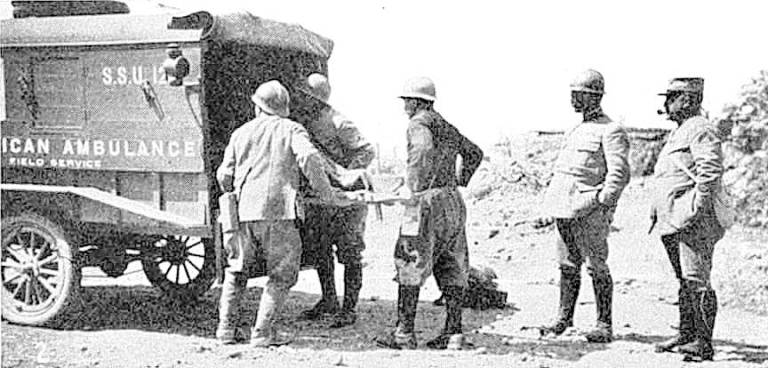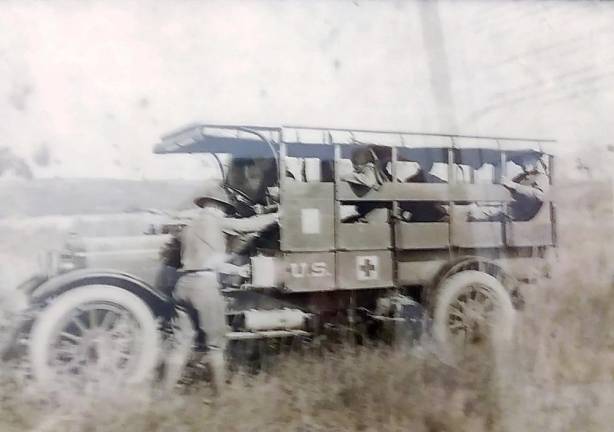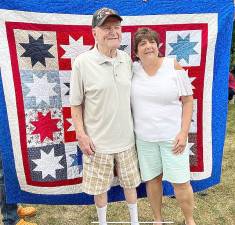West Milford’s World War I ambulance corps training center — the first in the nation
WEST MILFORD. The history of Ambulance Corp 33.


When World War I began in Europe on July 28, 1914, most Americans agreed with then-President Woodrow Wilson that the United States should remain neutral. That changed when the nation entered the war on April 6, 1917, after Germany’s message to all nations to stay away from the British Isles or face unrestricted warfare. Soon after that announcement, several U.S. ships were damaged or sunk by exploding German mines. The U.S. Senate voted 82 to 6 to declare war against Germany with the U.S. House of Representatives endorsing the declaration by a vote of 375 to 50.
People in West Milford and other parts of New Jersey joined the rest of the nation in expressing overwhelming feelings of patriotism and a desire to help their nation in the war effort. Dr. William H. Lawrence, a Summit physician and founder of Overlook Hospital, had the idea of forming an ambulance corps with a large contingent of North Jersey men. The idea was well received, with 122 men joining the group in 1917. The organization was to be identified as Ambulance Corps 33. After Dr. Lawrence offered the ambulance company to the War Department, he was notified it would only be accepted if it was sponsored by a chapter of the Red Cross.
After they had Red Cross approval, a training site for the newly established unit was needed. What better place than the township of West Milford with its mountains, hills and lakes? The aristocratic Van Wyck family, originally from Holland – whose early ancestors in America served in the Revolutionary and Civil wars – were based in New York State and held local and national political positions. They also owned 560 acres of vacation property that included a home, gatehouse and Hennion Pond in the Apshawa section of West Milford. (Located at 256 Macopin Road, the property, about 60 or so years ago, was sold by the Van Wycks. It became Camp Vacamas for children and is now operating as “Hands 4 Youth,” still with children’s programs.)
The following information was shared by Bill Perry of Echo Lake, who received the information from his father Edwin Perry, an original member of Ambulance Unit 33. Bill, who served in the U.S. Navy in World War II, will be celebrating his 97th birthday on November 12.
About a dozen people from Summit were the first to arrive at the Van Wyck estate in Apshawa to prepare the site for the ambulance unit. The Van Wyck family would no longer be using the property until the war ended. The unit needed to get facilities ready for the others who would be arriving for training. Two days later, a convoy of about 30 vehicles – furnished and driven by citizens — transported men and luggage to Camp Van Wyck. Three barracks to house the men were built adjacent to the headquarters. When the numbers of ambulance men grew, tents were added for them.
The headquarters was a building on the lake’s west shore. It included the officer’s quarters, general mess and kitchen. The initial training at Camp Van Wyck continued throughout the summer of 917. The unit became part of the Army Fourth Division, but recognition did not come easily. For some time, the company continued to operate under designation of the American Red Cross. On August 31 the contingent – with much fanfare- left for Camp Green, North Carolina, for intensive training in all arms “during winter in unforgettable mud,” Perry said.
The men had more training in Syracuse, NY, and were back in New Jersey on May 18, 1918, to board the “Honorata” heading out of New York Harbor for England. Perry said they docked safely in Liverpool after being attacked by an enemy submarine in the Irish sea. After spending two nights and a day aboard ship the men of Company 33 went by train to Winchester for a supposed rest.
Two days later they went to Southampton and boarded the “Antrim” – a fast channel steamer that took them to LeHarve, France. Later they engaged in intensive training on poison gas. At Belleau Wood on July 2, 1918, a call came for six members of the unit to report to the front lines with the Fifth and Sixth Marine Division. While carrying a wounded marine, John “Jack” Dean, one of the men from Camp Van Wyck, was hit, Perry reported. A shell exploded, killing the marine and mortally wounding Dean, a Butler resident.
Although Perry was not with Dean, he narrowly escaped injury. While he was unloading his ambulance, an exploding shell landed nearby, demolishing a French ambulance. A piece of shrapnel whizzed past Perry and another piece lodged in the calf of one of his legs.
On July 17 ambulances arrived and five of the six company officers and 40 stretcher bearers and first aid men were detailed to Noroy and Thury action fronts. The men who trained at Camp Van Wyck, Apshawa, were now evacuating sick and wounded, and they continuously moved in rapid succession to stations throughout France. “Dressing Stations” were established by the company at a series of locations.
Ambulances of the 33rd were at Marneuli en Dole. Perry’s information said the number of patients carried out by the company in eight days totaled approximately 2,700. They continued to work day and night.
The 33rd moved on foot from Chatteau de la Foret on August 14 to arrive at Montmiral the following day. Then Perry and the others traveled by trucks to Prez-sous-Lafauche, where the ambulances rejoined the company. The vehicles were repaired, and the company was re-equipped. An extensive training schedule was carried out.
In September they were back in action with “dressing stations” established at three locations. One of the ambulances was the first motorized vehicle to enter Haudimont while the Germans were still in possession of part of the town. On September 28 an eight-man detail from the unit went to the front to transport medical supplies by hand because of transportation difficulties. They made it back to the company on October 1. Perry said the ambulance work was accomplished under tremendous difficulties with one trip taking 42 hours.
The men of Ambulance Corps 33 saw the war end with the signing of the Armistice on November 11, 1918. They happily returned home to the United States. For years they held reunion dinners in Newark and later Summit at Suburban Hotel.
